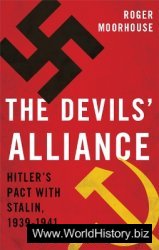The foundation of Anglo-Norman lordships in the Highlands in the twelfth century had not achieved what was hoped for of them because the new lords had soon gone native and adopted the Gaelic clan system. Because they were the best ways for chiefs and warriors to win prestige, private warfare and cattle raiding were endemic in the Highlands and often spilled over into the Lowlands. Mutual suspicion and loathing characterised relations between Highlanders and Lowlanders. The attitudes of Lowlanders towards the Gaels were remarkably similar to those of the Greeks and Romans towards the Gauls. If we believe the fourteenth-century Scots chronicler John of Fordun, the Lowlanders were civilised and possessed almost every virtue imaginable while the Highlanders were ‘fierce and untameable, uncouth and unpleasant, much given to theft, fond of doing nothing, but their minds are quick to learn, and cunning. They are strikingly handsome in appearance, but their clothing is unsightly. They are always hostile and savage, not only towards the people and language of England, but also towards their fellow Scots because of the language difference.’ In his poem The Dance of the Sevin Deidly Synnes the poet William Dunbar infests the lowest circles of Hell with Highlanders, where they drive the Devil mad with the unintelligible racket of their ‘Irish’ (i. e. Gaelic) speech. From the Lowlander’s point of view, the Highlanders were bar-bar barbarians. Medieval Scotland was a half-Celtic hybrid, and by the end of the Middle Ages the Celtic half was steadily declining in cultural prestige, which makes today’s idealisation of the Highlander all the more remarkable.




 World History
World History









